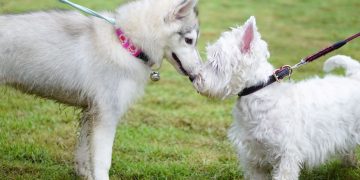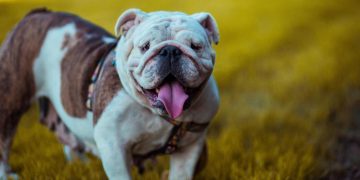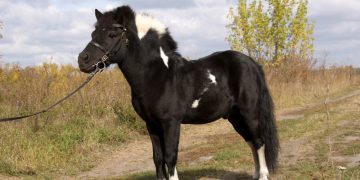Horses have been companions to humans for thousands of years, serving in a variety of roles from transportation to work, leisure, and sports. Today, horses continue to be valuable partners in many aspects of life. Whether you’re a seasoned equestrian or a newcomer to the world of horses, understanding these majestic animals is key to building a successful relationship with them.
In this article, we’ll explore everything you need to know about horses, including their biology, behavior, care needs, training tips, and more.
The Basics of Horse Biology
Horse Breeds and Types
Horses come in a wide variety of breeds, each with its own characteristics, physical traits, and temperaments. Broadly, horses can be classified into three categories based on their use and characteristics:
- Hotbloods: These breeds are known for their speed, agility, and stamina. Common examples include the Thoroughbred and Arabian horses.
- Coldbloods: Larger, more powerful breeds that are traditionally used for heavy work, such as draft horses like the Clydesdale or Shire.
- Warmbloods: These horses are a mix of hotblood and coldblood, often bred for riding and sport. Popular examples include the Dutch Warmblood and Hanoverian horses.
Anatomy of a Horse
Understanding the basic anatomy of a horse helps with caring for and training them. Key features include:
- Head: The horse’s head houses its eyes, ears, nostrils, and mouth. Horses rely heavily on their senses of sight, hearing, and smell.
- Neck and Back: The neck supports the head, while the back carries the saddle and rider’s weight.
- Legs and Hooves: Horses have long, muscular legs, and their hooves need regular care to ensure proper movement and balance.
- Teeth: Horses have large molars that help grind food, and like humans, they go through a teething process in their youth.
Lifespan and Growth
Horses typically live between 25-30 years, though some can live much longer with proper care. Foals are born after a gestation period of approximately 11 months and grow rapidly during their first few years.
Horse Behavior and Communication
Horses are highly social animals, often forming strong bonds with their herd mates. Understanding horse behavior is essential for building trust and effective communication.
Body Language
Horses communicate primarily through body language, which is why it’s crucial to observe their posture and movements. Some key behaviors to watch for include:
- Ears: Forward ears indicate interest or alertness, while flattened ears suggest irritation or aggression.
- Tail: A horse’s tail can convey emotions such as irritation (swishing), relaxation (still), or excitement (raised).
- Posture: A horse that stands tall with its head high may be confident, while a horse that crouches or lowers its head may feel fearful or submissive.
Vocalizations
Horses can make a variety of sounds to communicate with each other and with humans:
- Neigh or Whinny: A loud, high-pitched sound that is often used to call out to other horses.
- Snort: A short, sharp sound that can indicate curiosity or a sign of alertness.
- Nicker: A soft sound, often used between horses or when a horse is greeting someone.
Caring for Horses
Horses require significant care to maintain their health and well-being. Key areas of horse care include feeding, grooming, and medical attention.
Feeding and Nutrition
Horses are herbivores with a digestive system that is designed for grazing. Their diet consists primarily of:
- Hay: A primary source of fiber and nutrients.
- Grain: Used for additional energy, particularly in working horses.
- Fresh Water: Horses require access to clean, fresh water at all times.
- Supplements: Depending on the horse’s age, activity level, and health, supplements like vitamins and minerals may be necessary.
It’s important to feed horses in smaller portions throughout the day rather than one large meal to prevent digestive issues like colic.
Grooming and Hygiene
Regular grooming is essential for maintaining a horse’s coat and overall health. This includes:
- Brushing: Use a curry comb to loosen dirt and a stiff brush to remove debris.
- Hoof Care: Horses’ hooves should be cleaned daily and trimmed regularly by a farrier to prevent infections and ensure proper movement.
- Bathing: While not required often, horses should be bathed periodically to keep their coats clean and healthy, especially if they sweat a lot during work.
Health Care and Veterinary Needs
Regular check-ups with a veterinarian are crucial for detecting any potential health issues early. Vaccinations, deworming, and routine dental care are essential components of a horse’s healthcare regimen. Some common health concerns include:
- Colic: Digestive upset that can be life-threatening.
- Laminitis: A painful condition affecting the hooves, often linked to nutritional issues.
- Respiratory Infections: Horses can suffer from diseases like strangles or equine influenza.
Training Horses
Training a horse involves teaching them basic commands, behaviors, and skills. Whether you’re training a young horse (a colt or filly) or an adult horse, consistency, patience, and proper techniques are key.
Basic Commands and Groundwork
Before riding, horses should be trained to respond to basic commands like “walk, “trot, and whoa.” Groundwork, including leading, lunging, and desensitizing the horse to various stimuli, is essential for creating a safe, well-behaved companion.
Riding Training
Riding training focuses on teaching the horse to respond to the rider’s cues while maintaining a calm and collected demeanor. This includes:
- Saddle and Bridle Training: The horse learns to accept the saddle and bridle comfortably.
- Walk, Trot, and Canter: The horse learns to move smoothly under the rider’s direction.
- Collection and Flexion: Advanced training for sports such as dressage or jumping.
Behavioral Challenges
Horses, like any animals, may display challenging behaviors, such as:
- Bucking: Throwing the rider off by kicking out with their hind legs.
- Rearing: Rising up on their hind legs, often out of fear or frustration.
- Bolting: Running away uncontrollably due to stress or fear.
Addressing these behaviors early through proper training and handling is crucial to ensure a safe riding experience.
Conclusion
Horses are remarkable, intelligent animals that thrive on social interaction, proper care, and clear communication with their human companions. By understanding their biology, behavior, and care requirements, you can develop a stronger relationship with your horse, ensuring a happy, healthy, and productive partnership.
Whether you are looking to care for a horse as a companion or training one for competition, the bond between a horse and owner is a unique and rewarding experienc

























